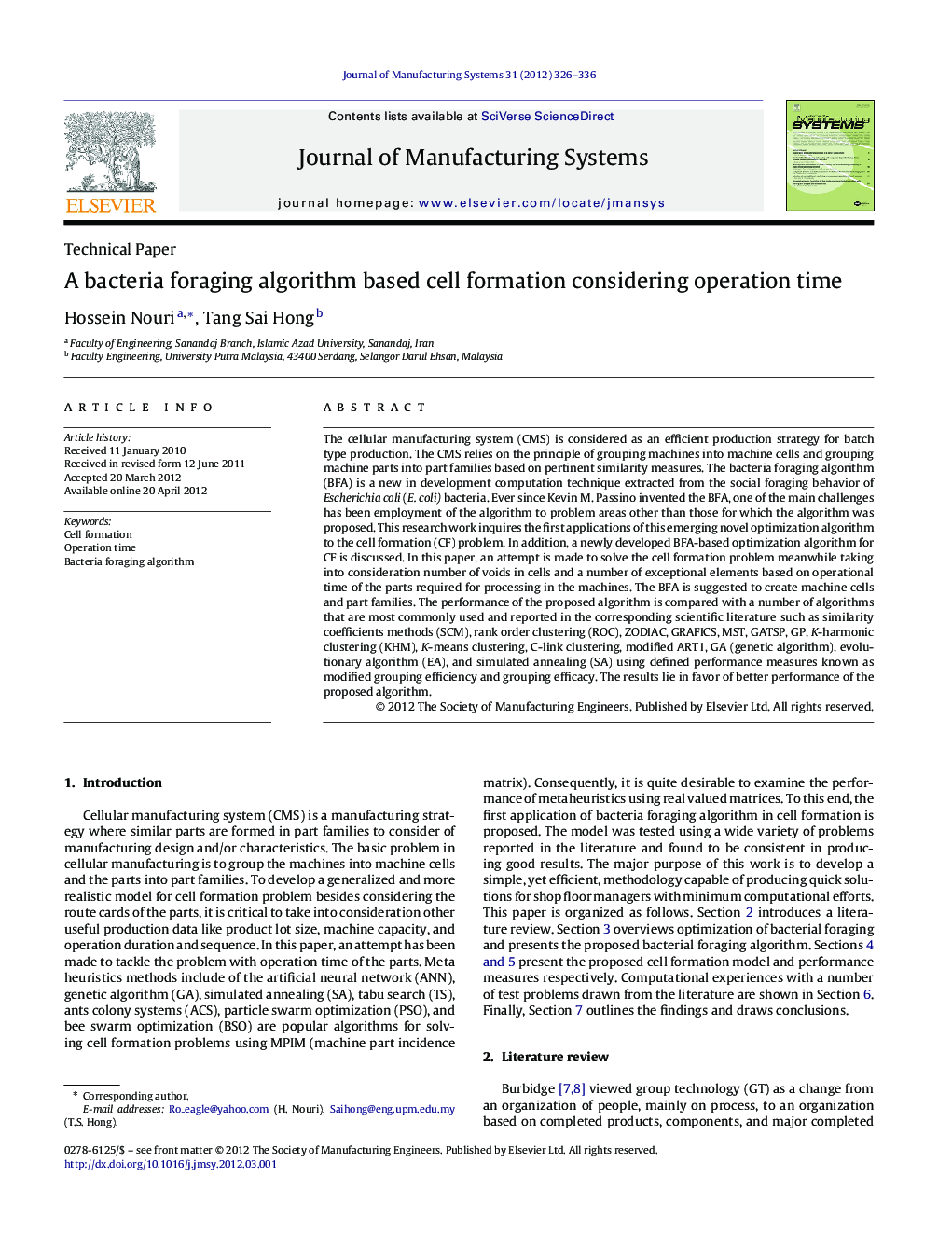| کد مقاله | کد نشریه | سال انتشار | مقاله انگلیسی | نسخه تمام متن |
|---|---|---|---|---|
| 1697515 | 1012080 | 2012 | 11 صفحه PDF | دانلود رایگان |

The cellular manufacturing system (CMS) is considered as an efficient production strategy for batch type production. The CMS relies on the principle of grouping machines into machine cells and grouping machine parts into part families based on pertinent similarity measures. The bacteria foraging algorithm (BFA) is a new in development computation technique extracted from the social foraging behavior of Escherichia coli (E. coli) bacteria. Ever since Kevin M. Passino invented the BFA, one of the main challenges has been employment of the algorithm to problem areas other than those for which the algorithm was proposed. This research work inquires the first applications of this emerging novel optimization algorithm to the cell formation (CF) problem. In addition, a newly developed BFA-based optimization algorithm for CF is discussed. In this paper, an attempt is made to solve the cell formation problem meanwhile taking into consideration number of voids in cells and a number of exceptional elements based on operational time of the parts required for processing in the machines. The BFA is suggested to create machine cells and part families. The performance of the proposed algorithm is compared with a number of algorithms that are most commonly used and reported in the corresponding scientific literature such as similarity coefficients methods (SCM), rank order clustering (ROC), ZODIAC, GRAFICS, MST, GATSP, GP, K-harmonic clustering (KHM), K-means clustering, C-link clustering, modified ART1, GA (genetic algorithm), evolutionary algorithm (EA), and simulated annealing (SA) using defined performance measures known as modified grouping efficiency and grouping efficacy. The results lie in favor of better performance of the proposed algorithm.
Journal: Journal of Manufacturing Systems - Volume 31, Issue 3, July 2012, Pages 326–336